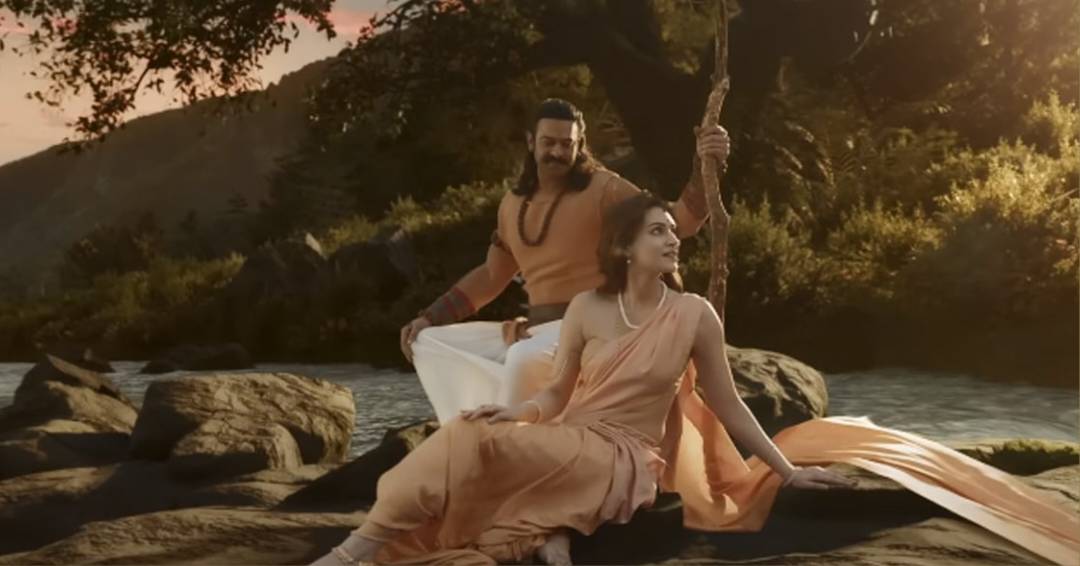
Reimagining a mythological epic for the present era can be an intriguing endeavor, as long as the filmmaker understands the distinction between adaptation and distortion. Unfortunately, writer-director Om Raut seems to have missed the mark with Adipurush, a bloated and hollow cinematic rendition of a portion of the Ramayana. This film fails to do justice to the epic or its iconic characters.
The tale of Lord Rama holds a significant place in Indian life, culture, and religion. Any attempt to bring it to the silver screen demands both meticulousness and reverence. While Adipurush displays veneration, much of it feels insincere and lacks firm creative integrity and storytelling prowess.
Despite its mammoth ambition, Adipurush lacks the imagination necessary for such a grand undertaking. The settings of the film, whether it be the jungle where Raghav agrees to a 14-year exile or the kingdom of Lanka ruled by Ravana, bear no resemblance to any part of the Indian subcontinent.
Adipurush feels like a mishmash of Planet of the Apes, King Kong, and various Hollywood superhero movies that the director and his peers are familiar with. Lord Rama is portrayed as a comic book hero armed with a never-ending supply of arrows, while Sita is reduced to a feeble damsel in distress. Ravana is a hybrid of Thanos and Voldemort, and Bajrang/Hanuman is depicted as an acrobat who barely realizes his incredible powers until someone reminds him of his ability to leap across the sea.
Watching Adipurush feels akin to watching a Marvel or DC movie. It is like chasing the illusory Swarna Mrig (golden deer) just as Raghav does in the epic. The creature turns out to be a mere mirage, not living up to its pretenses.
Adipurush showcases magic and miracles, but no trick employed throughout its three-hour runtime can offset the repercussions of trivializing a magnificent epic. The film tarnishes a captivating legend about the triumph of good over evil, which has been a source of inspiration for Indian storytelling since time immemorial.
The world built around the cottage where Raghav, Sita, and Shesh/Lakshmana reside is picturesque. Ravana’s palace in Lanka is impressively grand. However, neither space feels inhabitable or lived-in.
From the very beginning, it is evident that Adipurush will be a challenging film to endure. As minutes pass, it becomes increasingly tiresome, as the limited range and lack of consistency in the bag of tricks at its disposal become apparent.
A movie like Adipurush heavily relies on computer-generated imagery. The creators have spared no effort in saturating the film with excessive visual effects. Unfortunately, this artistic choice proves detrimental, as the VFX falls short of expectations. The visuals resemble overly vibrant drawings from an overactive child’s coloring book.
Consequently, nothing on the screen appears real or believable. This revered story of men and monkey gods deserved far greater attention to detail and meticulous execution. The human characters lack natural movements, while the talking primates display more humanity.
Characters seem to float in the air when they are not flying, but the film itself neither soars nor glides gracefully—it hobbles and crawls in ways that are neither captivating to watch nor narratively purposeful.
Adipurush is a peculiar blend of fantasy and fallacy, resulting from an excessive use of technical wizardry reminiscent of Hollywood’s tired tropes. Moreover, the chosen VFX does not suitably complement the retelling of an Indian epic. If the film intended to be so derivative in visual design and spatial dimensions, it should have opted for a story less deeply rooted in the Indian ethos than the Ramayana.
The film’s treatment of women in Adipurush is distressingly apparent, relegating them to peripheral roles within the saga and depriving them of meaningful intervention when the need arises. Characters like Rani Mandodari, Ravana’s neglected wife, and Surpanakha, the demon king’s sister seeking vengeance for her disfigured nose, can only express their grievances.
Saif Ali Khan’s presence towers over the rest of the cast, both literally and figuratively. On the battlefield, when he confronts the actor portraying the titular hero, he looms significantly taller. Khan revels in portraying the arch-villain, although his performance would have been more impactful if the lines he delivered were less stilted.
This is true for Prabhas’ performance as well. He possesses strong screen presence, but it seems wasted in an unworthy film.
If there is anything worse than Adipurush’s subpar dialogues, it is the film’s sound design. Not only is it unbearably loud, but it also lacks imagination. Yet, complaining about the sound design feels trivial when virtually everything else in Adipurush is similarly slapdash.

Post Your Comments